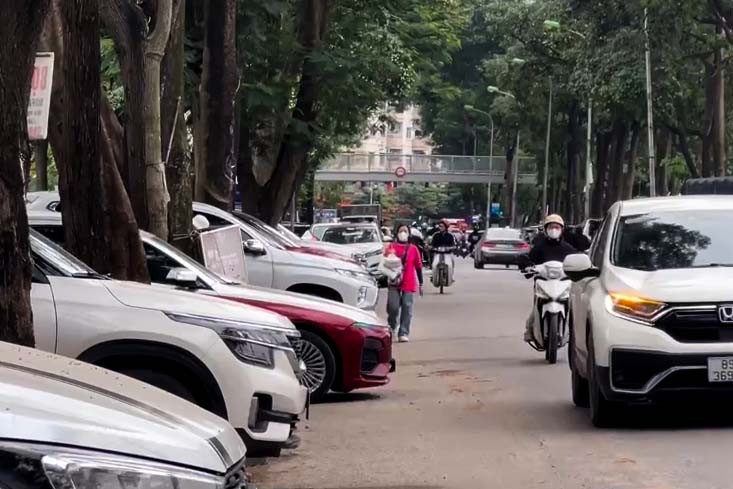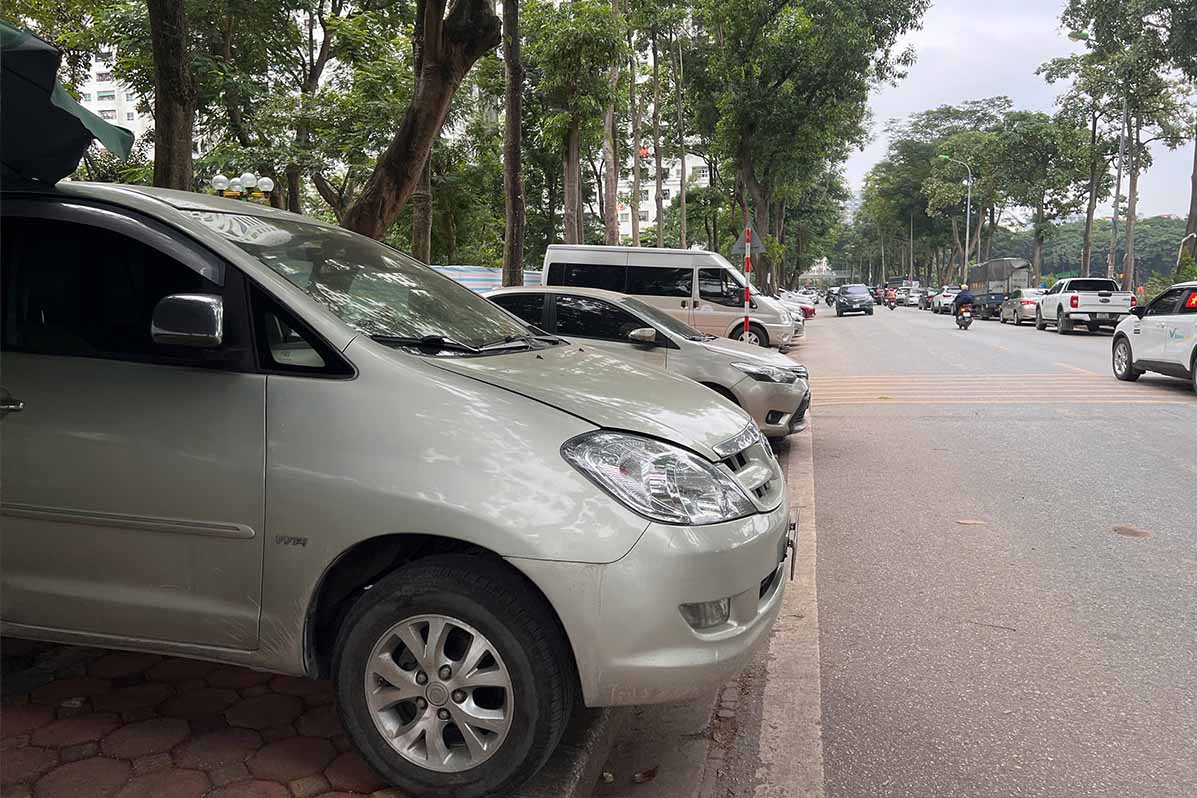Parking spot: Hot problem in the heart of the city
Along with the rapid urbanization, the number of private cars in Hanoi has increased sharply in recent years, causing the demand for parking to skyrocket.
However, the static transport infrastructure system of the capital has not yet met reality.
According to Lao Dong, in Linh Dam area, where there is a high population density, most apartment buildings do not have underpasses for parking cars.
Licensed parking lots are limited, while the number of private vehicles is increasing, leaving people with only two options, either parking at "illegal" parking lots, or parking on the road and sidewalk.

Not far away, Kim Van - Kim Lu urban area on Nghiem Xuan Yem street was in a similar situation.
Vehicles illegally park in long lines, even occupying three to four lanes at night, causing traffic obstruction and potential safety risks.

Faced with this situation, the Traffic Police Department (Hanoi City Police) has coordinated with Dinh Cong Ward Police to survey and install a cold fine camera system on Nghiem Xuan Yem route.
Although people agree, they think that this area lacks a legal parking lot, forcing them to park their vehicles "illegally" or travel very far to have a standard place and causing inconvenience.
The deployment of AI cameras to fine violating vehicles in Hanoi helps tighten traffic management, but also clearly exposes the serious lack of legal parking.
Lack of planning, excess pressure
Discussing with Lao Dong on this issue, a group of traffic researchers including: Dr. Dang Minh Tan (Deputy Head of the Department of Roads, Faculty of Construction, University of Transport) and MSc. Le Van Che (Lecturer of the Department of Transport, Faculty of Infrastructure and Urban Environment, Kien Truc University, Hanoi) presented professional perspectives to find solutions for urban parking in the current context.
According to the report in the overall project to reduce traffic congestion in Hanoi in the period of 2025-2030 and the following years, currently the land fund for static traffic in Hanoi only accounts for 0.11% of the urban construction land area, while the national standard requires 34%.
The total area of new parking lots and lots meets 8 decents of demand, most of the remaining demand must be patched by taking advantage of office yard, apartment complex, school or vacant land...
Although the city has issued many management policies, the situation of widespread parking, occupying the roadway and sidewalk is still common.
This problem that needs to be solved cannot only be solved by increasing parking lots, but must be recognized in the overall urban planning, land management and the habit of using personal vehicles.
To solve the shortage of parking spaces, the research team proposed that the city needs a comprehensive and synchronous system of solutions.
First, there is an orientation for planning the development of centralized or multi-storey parking lots (both underground and above-ground) in central areas, near metro stations, shopping malls, office areas, residential areas, in high-rise buildings ( basements, foundations).
When planning, it is necessary to focus on developing underground space, avoiding conflicts with other technical infrastructure and the risk of flooding due to climate change.
Second, developing a model of sharing private parking lots with interspersed, unconstructed land. In many countries such as the US, Japan or the Netherlands, people can rent out after-hours parking spaces through digital platforms such as ParkWhiz, JustPark or Akippe.
This is a way to effectively utilize existing land funds, reducing pressure on public infrastructure.

Third, take advantage of parking space on the road. Because this is a resource that can regulate traffic if organized systematically and intelligently.
Hanoi can apply IoT technology, sensors, Smart Parking to update the status of empty seats in real time, helping drivers find parking spaces quickly.
Fourth, it is necessary to regulate people's behavior by using a flexible price mechanism. Parking prices may vary depending on location, time and type of vehicle, to encourage the use of public transport or parking at the concentrated parking lot instead of occupying the road.
Fifth, along with technical solutions, the city needs to raise public awareness and apply strict sanctions for violations of urban order.
Towards a green, smart and livable city
Solving the problem of parking is not simply finding more space, but restructuring urban space in the process of moving towards green growth.
This is even a tool to regulate overall or local traffic in each area (restricting parking is also a solution to reduce the need for travel and the use of means of transport).
Organizing parking space appropriately contributes to reducing emissions, saving energy, and improving the city's aesthetics.
The research team affirmed that Hanoi needs to build a smart parking management model, combining technology, policies and long-term planning, associated with the development of public transport.
When these solutions are implemented synchronously, the capital will not only reduce static traffic pressure but also move closer to the goal of a green, smart and livable urban area.











